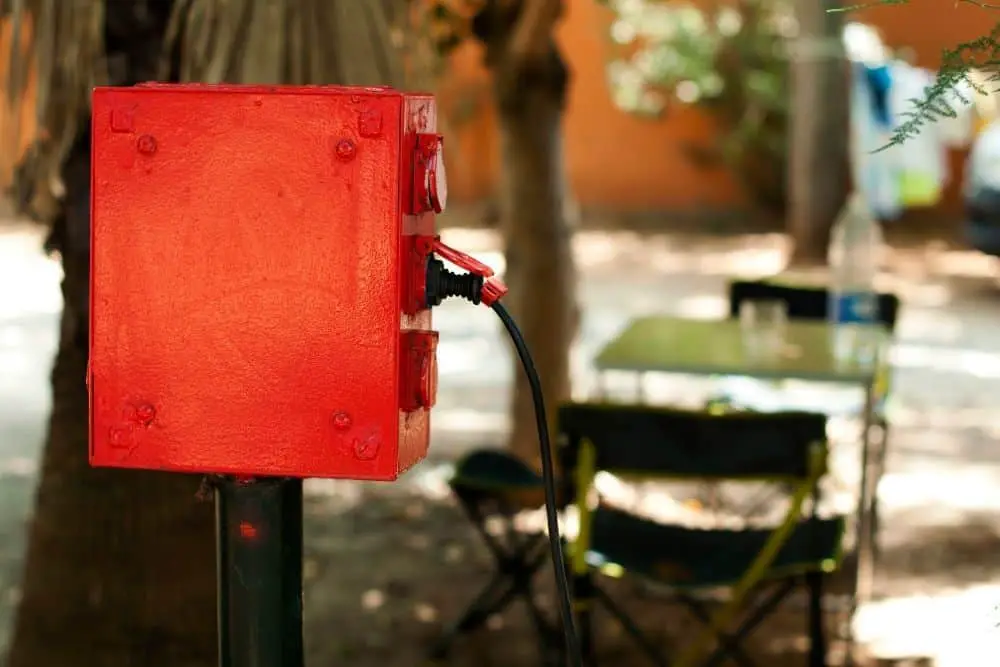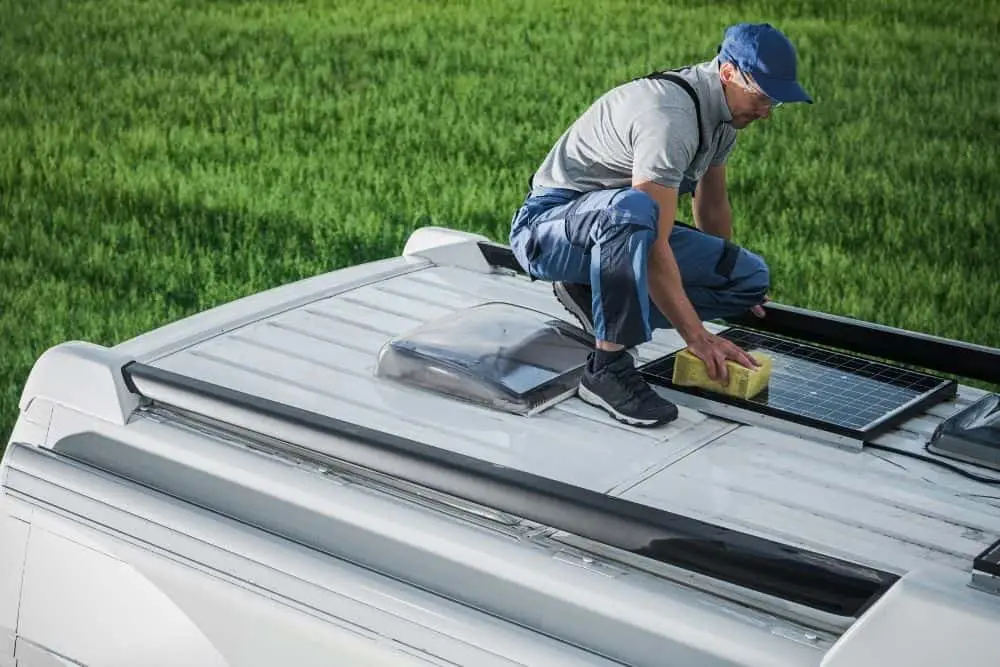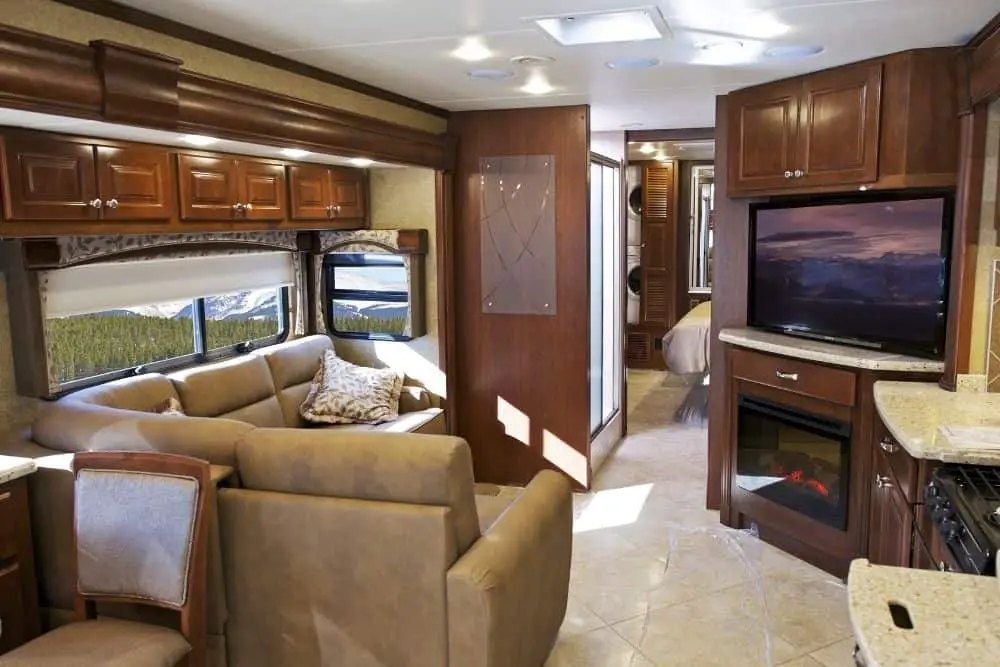When you are living in an RV, space is at a premium. You want to be able to watch your favorite TV show or sporting event but don’t have enough room for a big screen, and you’re also worried about overloading the circuits that power your home. One of the most common questions we get from those who live in RVs is how many amps does a TV draw? In this blog post, we will answer that question, and more so you can stay safe and enjoy your favorite shows!
One of the best things about RV Life is that you can watch television on the go while you are camping! You don’t have to miss out, and before you think about buying a TV for your RV, there are some critical considerations. The most crucial being how many amps does it use?
Why do you need an RV Television?
When you’re feeling lazy and can’t get outside because of the weather, your RV’s TV is a great way to pass the time. You may not want to go out on a day like this. What are you going to do? Get lost on the TV and forget about it! Televisions provide entertainment for those days when we decide to stay indoors or just need something other than nature to escape reality.
A TV is more than just a way to pass the time with entertainment. They can also be used as sources for news and weather bulletins, so if you’re considering going camping in the future, then this would be an excellent resource to use.
Types of TV Displays
The different types of TVs vary in their power consumption depending on the technology for its display. For example, a CRT or Plasma TV consumes more electricity than an LCD screen when both are displaying at maximum brightness but will consume less energy if they’re not as bright. This is because LEDs produce light efficiently and require much smaller amounts to offer high-quality pictures with rich colors, saving you money on your electric bill!
If you’re looking for an energy-efficient TV, your choices are LCD and microdisplay screens. Be careful, though! The latter two models can consume almost double the power of a traditional LED screen – that’s how they get their name, after all.
LED TVs distinguish themselves from other types of televisions because they reduce energy usage and cost a lot under budget. LED screens are the best choice for RV owners on The RV Web Network who want to be green but remain in their low-budget lifestyle.
We all want the best for our families, including giving them a clean environment to live in. LED technology is just one way you can be environmentally responsible with your RV. It uses less power than other types of TV screens do while still providing vibrant colors at higher resolutions!
RV TV Considerations
Power Supply

When it comes to small motor homes, 12V TVs are perfect. When you’re purchasing a television for your RV, consider the power supply that is currently available in your vehicle and go with units that require the same voltage as what’s offered by standard RVs: 12 volts. That way, there won’t be any hassle figuring out how to get all of those wires plugged in, like when using an AC plug or worrying about whether or not your TV will stay powered on throughout the night – because let’s face it, we want our favorite show!
Size and Mounting Options
Whether you have a small RV or not, it is essential to consider your TV’s size when traveling. TVs that are too big will take up valuable space in smaller RVs and may be difficult for viewers who are sitting further away from them. If space isn’t an issue, then there’s no harm in purchasing one larger than necessary because some people prefer the bigger screens anyway!
The two most common mounting choices for people with RVs are to mount their TVs on the wall or use a flip-down TV. The latter option can save you space because it is adjustable, so if your RV has little room, this could be an excellent choice for you.
Amps Depending on TV Type
In order to determine how many amps your TV uses, you need to know the size and type of it. The following information will help take care of that:
You’ll find that a plasma TV will use the most power, and microdisplays are on the bottom end of electrical consumption. A 906 square inch plasma, for example, uses around 2.64 amps, while a 46-inch microdisplay consumes about 0.98 amps per hour during usage.
When it comes to choosing your TV, LED televisions are said to be more power-efficient than plasma. There is also a big range when it comes down to LCD TVs, which tend to vary in their power needs from 1.2 amps for 46-inch units all the way up to 3.1 amps, with microdisplays being the most efficient of them all.
Different types of TV will have different energy consumption.
Plasma and LDC televisions are a hefty energy suck. On average, they double or triple your power bill in the long run as well! For instance, 20 inch LCD TVs use 45 watts which is enough to charge up laptops, but 55-inch plasma screens take around 507 watts – that’s close to running large refrigerators!
The first way to calculate this number would be by the size of the display, but there are other factors that come into play, too, such as CRT vs LCD or Micro Display Rear Projectors. If you’re looking for something less complicated, though, then your best bet might just be using watts per square inch because it takes all these different aspects into account without trying to complicate things further than they need to go!
The following statistics are key: Microdisplay rear projectors use 0.11 to 0.15 watts per square inch; An LCD TV consume between .16 to .41 watts per square inch. CRTs range from .25 to 0.40 watts per square in.; plasmas run around .30 to .39watts/square inch.
If you’re looking for a TV to mount in your RV, plasma TVs are not the best option. You should look for rear-projection options like LCD or DLP technology because these devices don’t use as much power, and they can be run on generators if necessary, unlike other types of TVs, which require more energy.
Today’s television sets are not just a big screen; they’re also built to be more power-efficient than the old models. CRTs and LCDs, although brighter, don’t have bigger displays, but units usually range anywhere from 36 inches to 40 inches in size.
Power Sources

Solar panels are a great way to power your RV’s electricity needs while camping. Depending on how much electricity you use, a solar panel system and battery bank is a great option, there are different options for size and budget for your RV. They can be used either at full-time campgrounds with shore power hookups or dry camping sites without any electric access of their own.
You will be able to plug in your appliances without any worries of running out, so long as you have enough solar panels. It can get complicated when trying to match up which items need each other’s power sources. However, it is not an issue with the right amount of sunshine and a well-placed set of photovoltaic cells!
Choosing a Unit
The question of how many amps a TV uses is essential when planning your RV camping trip. Campers should know that the answer to this vital question will help them decide whether or not they have enough power for their planned electrical appliances, and if so, what type would be best suited to meet their needs.
RVing can sometimes get boring, but that doesn’t mean you have to be bored! Having a TV in your RV will keep things fresh when the weather is too bad to do anything outside of it’s late in the evening and it’s too dark to do anything outside.
Nowadays, TVs have become a staple in many homes. They’re not just for watching your favorite show or movie anymore; they also help create the perfect ambiance for parties and gatherings of all kinds! However, when you travel outside to an RV – which is especially important if it doesn’t come with solar panels or generators on board (or at least some backup options) – you might want to consider that bigger TVs are more power-hungry than smaller ones. This means that TV size should be considered along with how much amps it draws so as not to overload any system without prime accessibility sources like those mentioned above.
How many amps does a 12v TV draw?
A 12v TV will draw about 0.05 amps, which is about the same as an LED light bulb or a small fan drawing power from your RV’s battery system! The average TV draws around 40-80 watts of electricity while on standby mode and between 200 to 400 when it’s in use (depending upon screen size).
This means that if you have two TVs running at once – one with 60W draw, for example – then they will only consume 120watts together because each has its own separate circuit breaker/fuse panel within their respective wiring systems.
How many amps does a 32 inch TV draw?
A 32 inch TV draws about 20 amps. However, this could vary depending on what type of TV you have. A 32 inch TV draws about the same amount of power as a microwave oven, which is around 1200 watts! This means that if you have two TVs running at once – one with 60W draw, for example – then they will only consume 120 watts together because each has its own separate circuit breaker/fuse panel within their respective wiring systems.”
The average 12v system can handle up to 100-200amps without any issues or risk; however, it’s important not just to look into how many amp hours your battery capacity is but also what kind and size batteries are in use (like flooded lead-acid vs. AGM). The larger capacity RV electrical needs require more storage space on board, so it’s important to utilize multiple batteries in your battery bank and not just one large one.
The average depth of discharge (DoD) is 50% for AGM/Gel batteries. However, for deep-cycle lead-acid batteries, it is much lower. This is due to the fact that wet battery technology has been around much longer. The depth of discharge for a wet cell lead-acid battery should be kept below 20%, or the life of the battery will be significantly compromised.
In Conclusion
Some TVs are more power-hungry than others, and you will need to consider the size of your TV as well. The larger units require a higher wattage for those in an RV that is not equipped with solar panels or generators on board (or at least have some backup options).


